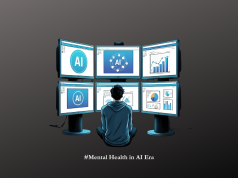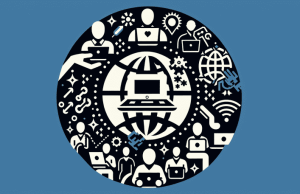In the ceaseless hustle of today’s business world, a silent force operates behind the scenes of every task, project, and email sent: the invisible labor of mental and emotional effort. At The Work Times, we recognize the immense value of this unseen, yet essential, part of the labor force and the profound impact it has on individual mental health and overall workplace dynamics.
The concept of ‘invisible labor’ encompasses the cognitive and emotional workload that employees carry—decision-making, emotional regulation, communication finesse, and the constant need for adaptability. It’s the mental spreadsheet of tasks, the anticipation of colleagues’ needs, and the emotional buffering that can make the difference between a functional team and a phenomenal one. Yet, despite its significance, this labor is rarely recognized in performance reviews or compensation packages, leaving a gap in how we value and support our workforce.
The weight of this intangible labor has a tangible effect: burnout. The World Health Organization has classified burnout as an occupational phenomenon characterized by chronic workplace stress that has not been successfully managed. Burnout doesn’t just impact the well-being of individuals—it also affects the bottom line. Research shows that burned-out employees are less productive, more likely to take sick leave, and more prone to quitting.
Self-care, once a buzzword, is now a mandate. It’s the practice of individuals engaging in activities that replenish their mental and emotional reserves. However, self-care shouldn’t be solely an individual’s responsibility. Employers play a pivotal role in cultivating an environment where self-care is embedded into the company culture.
Leading companies are increasingly innovative in their approach to employee well-being. Google, for example, offers ‘gPause’ practices to encourage mindfulness and stress reduction. Asana’s ‘No Meeting Wednesdays’ offer a break from the back-to-back meeting culture, providing employees with uninterrupted time for deep work or rest. These strategies are not just feel-good add-ons; they are deliberate investments in the health and efficiency of the workforce.
But these initiatives only scratch the surface of addressing invisible labor. Employers must normalize mental health discussions, destigmatize seeking help, and provide comprehensive support systems. This includes access to mental health professionals, flexible work arrangements, and an organizational ethos that acknowledges the human side of work.
As Employee Engagement Specialists, we urge a shift in mindset. Employers and employees alike should encourage open dialogue about workload, stressors, and capacity. It’s about recognizing that mental and emotional effort is as crucial as any other form of labor, and it’s high time we bring this invisible work into the spotlight.
Let’s start a conversation on how we can all contribute to a more empathetic and psychologically safe work environment. By prioritizing mental health and self-care, we not only enhance individual well-being but also drive engagement, innovation, and productivity. It’s a win-win that can propel our businesses and our people to new heights. It’s time to recognize and reward the invisible labor in our midst.
We invite you to share your thoughts and experiences. Your insights can help shape a more supportive future for the modern workforce. After all, a healthy mind is the bedrock of a thriving professional environment. Let’s work together to build workplaces where invisible labor is visible—and valued.




























